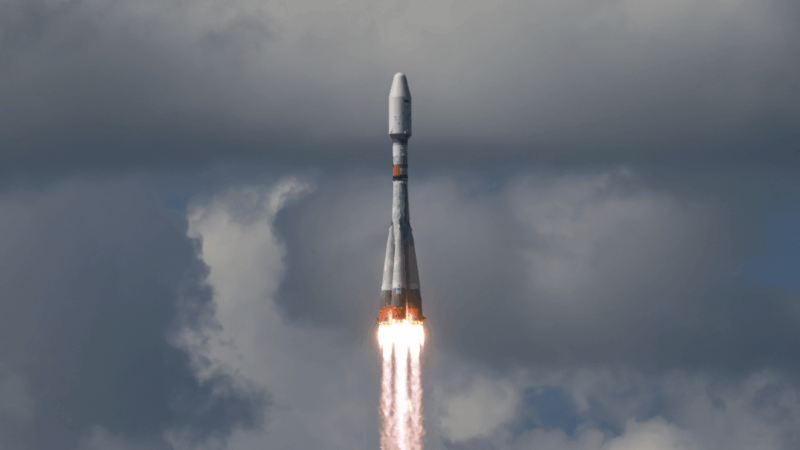What came together to make a deadly Alabama tornado
Experts say a natural La Nina weather pattern, unusually warm moist air juiced by climate change, and long-term shift in where tornadoes hit all are factors in Thursday's devastating tornado in Alabama.
By Seth Borenstein, AP Science Writer
DENVER (AP) — A La Nina weather pattern, warm moist air coming from an unusually toasty Gulf of Mexico, likely juiced by climate change, and a decades long eastward shift of tornadoes came together to create the unusually early and deadly storm system that hit Alabama Thursday, meteorologists said.
And it may be the start of a bad tornado year, one expert worries.
Early signals, which could change, “indicate the overall pattern remains favorable for an above average tornadic year,” said Northern Illinois University meteorology professor Victor Gensini, who studies tornado patterns.
Gensini said his concern is mostly based on historic patterns and changes in atmospheric conditions that happen when a La Nina, which is a natural cooling of parts of the Pacific that changes weather worldwide, dissipates like it is forecast to do in a few months.
A needed combination
For tornadoes to form, two big ingredients are needed that often aren’t at high enough levels at the same time: wet stormy instability and wind shear, which is a difference in wind speeds and directions at different altitudes.
At this time of year, “shear is a guarantee,” said Harold Brooks, a senior scientist at the National Oceanic and Atmospheric Administration’s National Severe Storms Laboratory. “What happens is when you get moisture you can have a (storm) system. That is the ingredient that is usually missing this time of year.”
The cold front was following a classic waviness in the jet stream — the atmospheric rivers that move weather systems — seen in La Nina winters, Gensini said. La Nina winters tend to produce more tornadoes, and NOAA this week said preliminary numbers show 1,331 tornadoes in 2022, which was a La Nina year, 9% more than average.
“If you’re going to get tornadoes in January, this is the type of setup that’s going to produce them,” Gensini said.
Still, without moisture there are no tornadoes.

Warm moist air
Measurements of moisture in the Alabama air were about twice as high as they should be this time of year and more like May in Tornado Alley, an area stretching from Texas to South Dakota known for being prone to twisters, Gensini said. That’s more than enough for a tornado.
The warm moist air is from the Gulf of Mexico and he said, “that’s a climate change signal.”
Gensini pointed to NOAA measurements of water temperature throughout the Gulf on a computer screen and said: “Look at that number. 70 (21 degrees Celsius). 70. 70. That is ridiculous. That’s way above average” for this time of year. That nearby warm water juiced up the air.
“This is very much a La Nina type of system that you’d expect but is being augmented by abnormally warm Gulf of Mexico sea surface temperatures,” Gensini said.
The warm humid air hits the cold front and goes up like a ramp and the mixing that creates tornadoes begin, Gensini said.
Tornadoes hitting east
Over the past few decades, a new pattern of tornado activity has emerged.
There are fewer tornadoes in Tornado Alley and more of them east of the Mississippi River in the Southeast, a 2018 study by Gensini and Brooks found.
Tornado activity is increasing most in Mississippi, Arkansas, Tennessee, Louisiana, Alabama, Kentucky, Missouri, Illinois, Indiana, Wisconsin, Iowa and parts of Ohio and Michigan. The biggest drop in number of tornadoes is in Texas, but even with the decline, Texas still gets the most tornadoes of any state.
Gensini said his lab is working this summer to try to figure out why that is.

More vulnerability
A nasty side effect of tornadoes moving further east is that they are moving from less populated areas to more crowded ones, Brooks and Gensini said.
In Tornado Alley, a tornado can go for miles and miles and not hit anything and anyone and thus not be an issue, Brooks said. But that’s not really the case in the East. People and buildings are in the way.
And the people in the way are more vulnerable.
“There’s more poverty in the Southeast, there’s a greater mobile home population” which is one of the most dangerous places to be in a tornado, Brooks said.
Also because of storm tracks, or the routes storms follow due to wind and weather conditions, the further east tornadoes hit, the more likely they are to hit later in the day and even at night, when people are sleeping or not listening for warnings, Gensini said.
‘Bomb cyclone’ forecasted to bring heavy snow, blizzard conditions and dangerous travel
A 'bomb cyclone' is intensifying severe winter weather for millions of people across the U.S. The system is expected to knock out power and disrupt holiday travel.
Russia sends 3 Iranian satellites into orbit, report says
The report said that a Russian rocket sent the satellites on Sunday from a launchpad in eastern Russia.
Viral global TikToks: A twist on soccer, Tanzania’s Charlie Chaplin, hope in Gaza
TikToks are everywhere (well, except countries like Australia and India, where they've been banned.) We talk to the creators of some of the year's most popular reels from the Global South.
This painting is missing. Do you have it?
An important work from a rediscovered artist has been absent from public view since the 1970s. A New York curator is hunting for it.
Memory loss: As AI gobbles up chips, prices for devices may rise
Demand for memory chips currently exceeds supply and there's very little chance of that changing any time soon. More chips for AI means less available for other products such as computers and phones and that could drive up those prices too.
Brigitte Bardot, sex goddess of cinema, has died
Legendary screen siren and animal rights activist Brigitte Bardot has died at age 91. The alluring former model starred in numerous movies, often playing the highly sexualized love interest.







